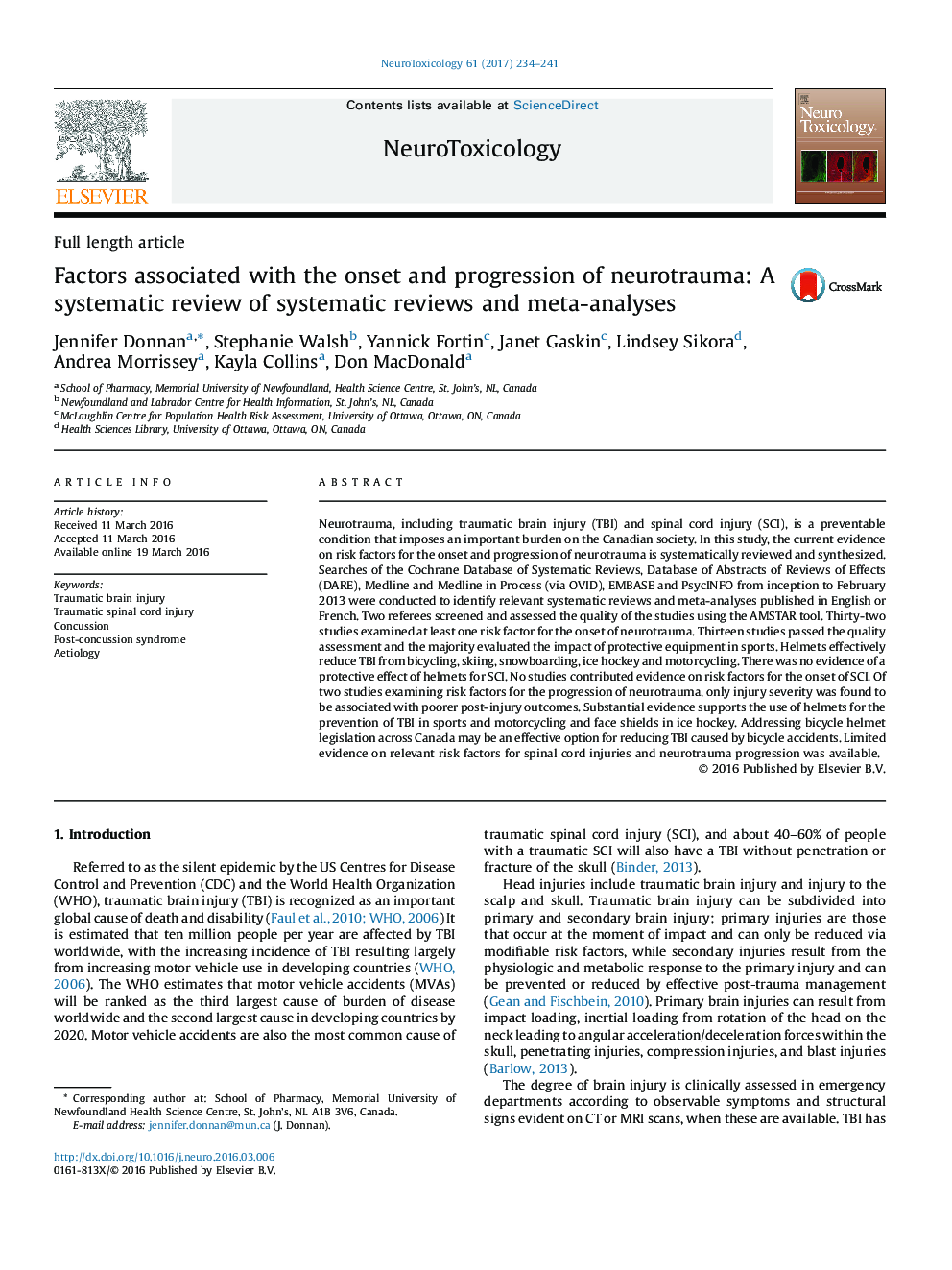| Article ID | Journal | Published Year | Pages | File Type |
|---|---|---|---|---|
| 5560924 | NeuroToxicology | 2017 | 8 Pages |
â¢Neurotrauma, including traumatic brain injury (TBI) and spinal cord injury (SCI), is a preventable condition.â¢The incidence of severe TBI is estimated to be 11.4 cases per 100,000 and mild TBI (MBI) is estimated to be about 600 cases per 100,000 annually.â¢MBI occurs mainly due to sport injury whereas TBI could result from falls, assaults, or motor vehicle accidents/collisions.â¢Alcohol use may not be a direct risk factor for injury, but may modify behavior to cause the injury.â¢The study identified that protective factors include air bags, seat belts, head rests in motor vehicles, sports helmets, and face shields.
Neurotrauma, including traumatic brain injury (TBI) and spinal cord injury (SCI), is a preventable condition that imposes an important burden on the Canadian society. In this study, the current evidence on risk factors for the onset and progression of neurotrauma is systematically reviewed and synthesized. Searches of the Cochrane Database of Systematic Reviews, Database of Abstracts of Reviews of Effects (DARE), Medline and Medline in Process (via OVID), EMBASE and PsycINFO from inception to February 2013 were conducted to identify relevant systematic reviews and meta-analyses published in English or French. Two referees screened and assessed the quality of the studies using the AMSTAR tool. Thirty-two studies examined at least one risk factor for the onset of neurotrauma. Thirteen studies passed the quality assessment and the majority evaluated the impact of protective equipment in sports. Helmets effectively reduce TBI from bicycling, skiing, snowboarding, ice hockey and motorcycling. There was no evidence of a protective effect of helmets for SCI. No studies contributed evidence on risk factors for the onset of SCI. Of two studies examining risk factors for the progression of neurotrauma, only injury severity was found to be associated with poorer post-injury outcomes. Substantial evidence supports the use of helmets for the prevention of TBI in sports and motorcycling and face shields in ice hockey. Addressing bicycle helmet legislation across Canada may be an effective option for reducing TBI caused by bicycle accidents. Limited evidence on relevant risk factors for spinal cord injuries and neurotrauma progression was available.
